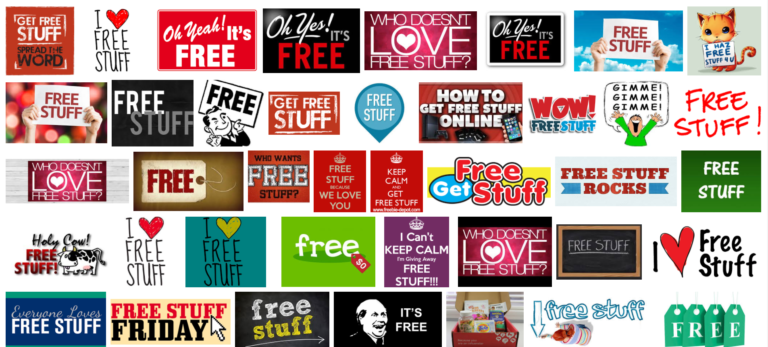Did you ever heard of freebies?
Don’t believe – you didn’t! When you search for something you really need – technical instructions, guidelines, e-books, whitepapers etc. – and you finally find exactly what you need!And it’s absolutely free! You just need to enter your email – and they will open you a link to download… Frequently – your email turns out to be more valuable information, than you was thinking. First people were very naive and they really used to leave their emails and sometimes even got the broken links instead, or just the short description of what they were searching for.
Email for spam – do you have one?
Time passed and almost everybody now has the so-called “email for spam” – an email address, you have created specially for these needs. But marketers didn’t stay away, made some trickery changes and now you need either to follow the link, that is sent to your email to complete the registration/newsletter subscription or they simply tell you: “leave your email and we will send the required information”, e-book, etc. on your email. So the idea with fake email is not working anymore.
And from that time – all these “Free Goodies” became the most powerful marketers weapon! It is based on the innate human essence – getting something for a free! And that means – that it is working in all instances!
We have already got equated with Webinars – as one of the current most effective marketing tools – today let’s talk about white papers.
One of the best and most comprehensive description of the term is given by an expert on B2B content writing – Gordon Graham who has worked on more than 235 white papers. He is recognized expert from late 1990s.
White Paper is a persuasive essay that uses facts and logic to promote a certain product, service, or solution to a problem
Author insists that White Paper – is a King of Content because of their profound ability to engaged B2B prospects thorough a complex sales circle. White papers emerged more than 100 years ago, where they are now, and the most likely possibilities for their future.
So we need to master this skill of writing White Papers right away! Luckily it’s not that complected and it has it’s strict rules and guidelines, that will help us.
“White Paper” or “Whitepaper” 
First question is very unexpected one – how to write “White Paper” or “Whitepaper”. Dictionaries tell us that separately would be right. Then Why we still can observe the misspelling?
Google Trends tells us, that people search for both variants, thought for the Whitepaper much rarer. Adwords keyword planner even group them into one and refer to its Keyword Match Type guideline. Looking closer – you will find, that “Whitepaper” searches mostly come from Netherlands, Germany and then Australia and people, searching for “White Paper” are from Singapore, South Africa, United Kingdom, Australia, United States, etc. Its seems that just for Australians doesn’t matter how to Google at all. But the answer is more interesting. In Netherlands and Germany they just saying Whitepaper on their native language – and it’s correct!
So what constitutes a great lead-generating whitepaper?
1. Find a topic that feeds a need.
You must know your target market, what do they want to know and what’s already out there? You can explore topics in social media and community sites that generate a lot of comments. If you have expertise in one of those topics, get to work.
2. Put your heart into it.
Don’t just patch together a bunch of other peoples’ work. Analyze the data and add value by evaluating options and presenting them to your readers in an easy to understand way.
3. Make it substantial.
Cover the ground. Make an outline first, and organize it well into chapters or sections. It’s a good idea to make each section a “bite-sized” chunk, maybe one page with charts or graphics that covers a certain point.
4. Make it authoritative.
Do your homework and make sure you mention previous authoritative work on the subject. Your mission isn’t to be the only expert in the field – it’s to be the latest expert with the freshest insights.
5. Create a great landing page.
Include a summary and topics to let people know what the whitepaper’s about. Tell them why it’s important to them, and with time and exposure, include some snippets from comments and reviews.
Tips that will help you creating the White Paper
1. The focus is the customer NOT YOU!
The first important thing to bear in mind is that the white paper is not about you or your business. It’s about imparting useful information that can attract people to download it – so you need to get inside the head of your target audience and consider what they want to know, how they want to know it and how you can present it to them most effectively. Providing useful information means you will create a “lead magnet” to attract visitors wanting to know more; they download your report, enter your sales and marketing database and are there for further campaigns.
2. Crafting the Title.
People will look at the title and make a decision whether it’s information they need to know – so take time to make the title interesting. Often using the numbers 3, 5, and 7 is effective in grabbing people’s attention – such as “5 Ways to…”, “3 Steps to…” etc.
3. Pitching the Content.
You want to present just enough content to be of value to your audience – 7 to 10 pages is often enough; don’t blind them or overload them with reams of information; you are whetting their appetite. It’s not about you – but it is about letting them know that you know what you’re talking about and can provide value to their business; so keeping it relevant, succinct and incisive will serve you well. Attain credibility by quoting statistics, graphics and diagrams wherever possible.
Why it has to be such a long White Paper? Because if it were three pages, there would be very little to re-purpose, of course! Also, contrary to popular belief, David Ogilvy was right when he said “Long copy sells.” Also, if someone downloads a white paper and it’s just a few pages, there is a bit of a feeling of being shortchanged. You should make sure your white papers are substantial, meaty and chock-full of solid facts!
4. Introducing your business.
You can introduce your business on the last page, after you have presented the relevant information your customer downloaded your report to find. But a white paper is supposed to be “thought leading.” It’s crass to sell your product with it; your purpose instead is to impress the prospect with your expertise and to entice them to research whether they want to further a relationship with your company. So don’t mention your product — it knocks your company off the pedestal you’re trying to set it on. Remember that the information about your company and business all around, so it will not be left unnoticed.
5. Don’t forget the call to action. Just do it! ))
A little bit history…

Since the early 1990s, the term “white paper” has been applied to documents used as marketing or sales tools in business. These white papers are long-form content designed to promote the products or services from a specific company. As a marketing tool, these papers use selected facts and logical arguments to build a case favorable to the company sponsoring the document.
B2B white papers are often used to generate sales leads, establish thought leadership, make a business case, or inform and persuade prospective customers, channel partners, journalists, analysts, or investors. In digital marketing, white papers are often referred to as a form of content marketing. Many of these white papers argue that one particular technology, product or method is superior for solving a specific business problem. They may also present research findings, list a set of questions or tips about a certain business issue, or highlight a particular product or service from a vendor.
There are, essentially, three main types of commercial white papers and Gordon Graham comparing them with the ice cream flavors:
A product backgrounder is like vanilla ice cream 
Backgrounder: Describes the technical or business benefits of a certain vendor’s offering, either a product, service, or methodology. This type of white paper is best used to supplement a product launch, argue a business case, or support a technical evaluation at the bottom of the sales funnel.
A numbered list is like strawberry ice cream
Numbered list: Presents a set of tips, questions, or points about a certain business issue. This type is best used to get attention with new or provocative views, or cast aspersions on competitors, especially by using FUD.
A problem/solution white paper is like chocolate ice cream
Problem/solution: Recommends a new, improved solution to a nagging business problem. This type is best used to generate leads, build mind share, or inform and persuade stakeholders.
You can combine a numbered list with other types. But it’s not really workable to combine the detailed product information of a backgrounder with the industry-wide perspective of a problem/solution white paper.





0 Comments